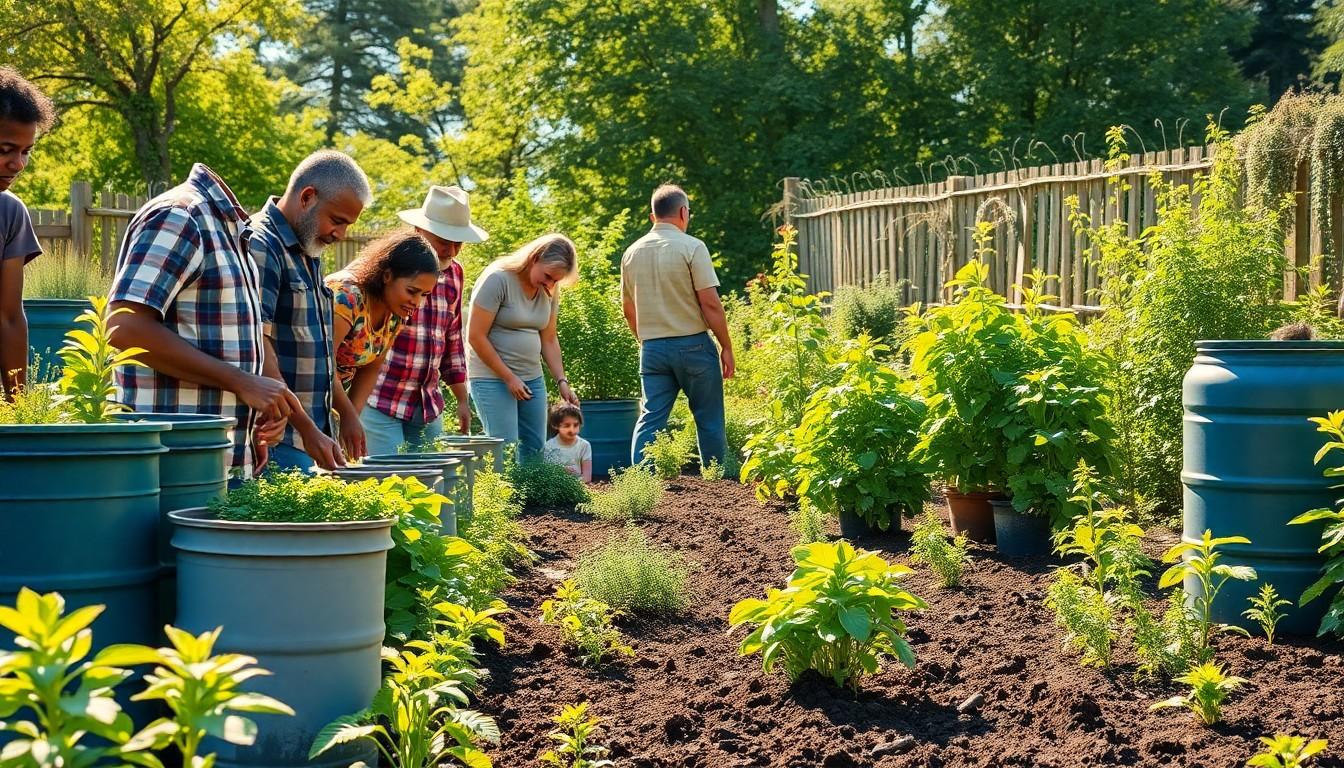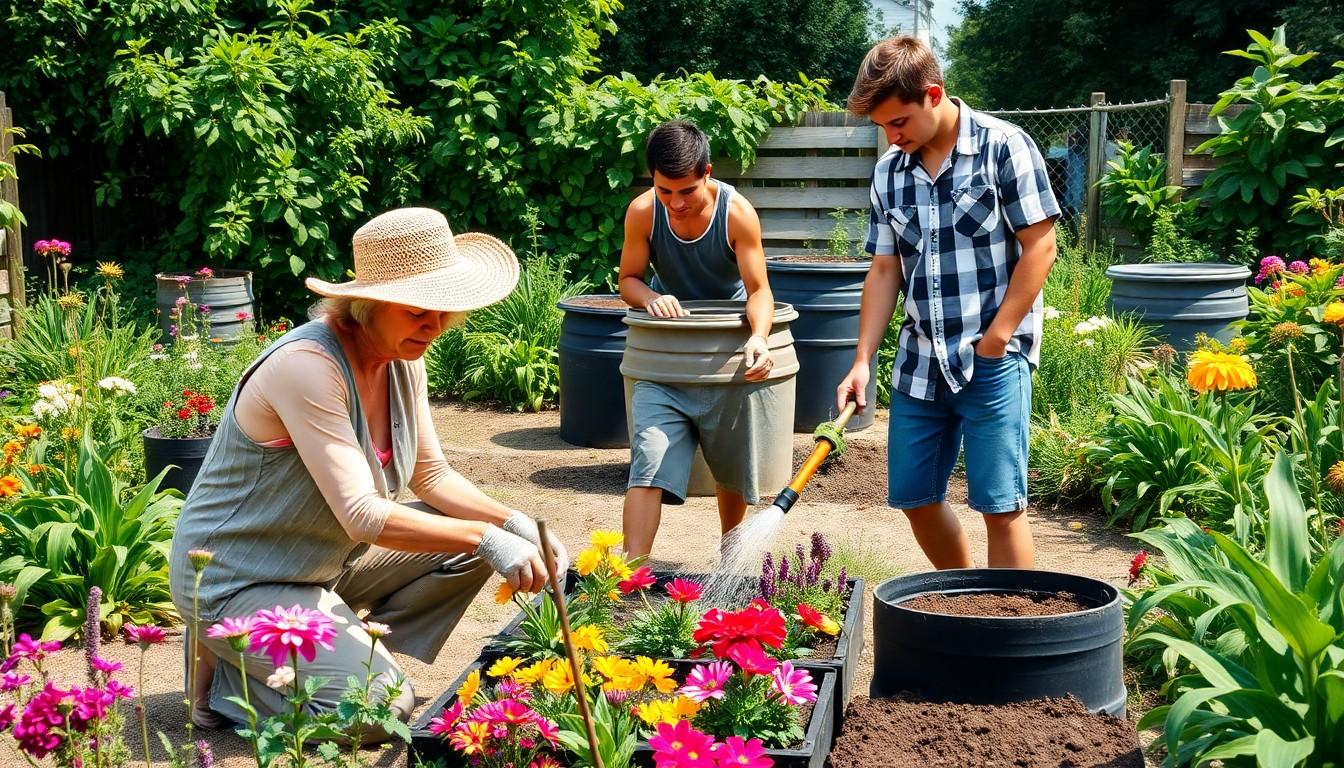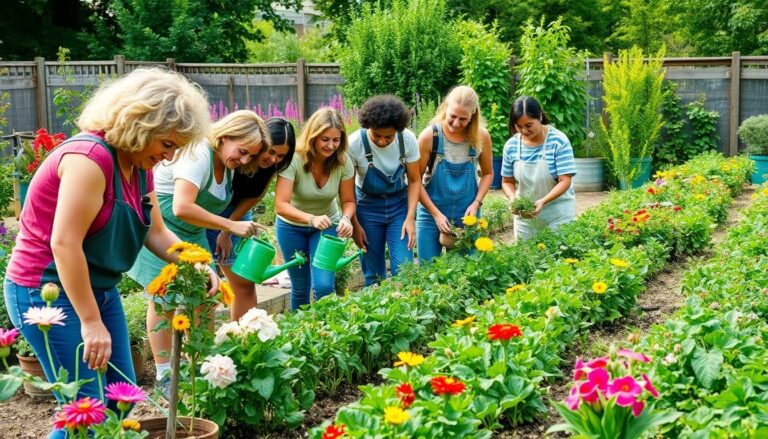Imagine stepping into your backyard, greeted by a flourishing oasis that not only looks stunning but also helps save the planet. Creating a sustainable garden isn’t just about growing plants; it’s about cultivating a lifestyle that respects nature while giving Mother Earth a big ol’ hug. With a bit of creativity and some eco-friendly tricks up your sleeve, anyone can transform their patch of dirt into a vibrant paradise.
creating a sustainable garden
Sustainable gardening encompasses practices that promote ecological health and biodiversity. It prioritizes environmental stewardship, using methods that enhance the garden’s resilience while minimizing harm.
Definition and Importance
Sustainable gardening involves cultivating plants in ways that maintain ecological balance. It emphasizes practices such as composting, organic pest control, and soil conservation. These methods support local wildlife and ecosystems. Understanding its importance helps gardeners make informed choices that protect natural resources and reduce waste. By embracing sustainable gardening, individuals contribute to environmental conservation and foster a connection to nature.
Benefits of Sustainable Gardening
Sustainable gardening offers numerous benefits for both the environment and gardeners. It enhances soil health through organic matter, which leads to better water retention and nutrient availability. Diverse plant choices attract beneficial insects, promoting natural pest control. Practicing sustainable gardening reduces reliance on chemical fertilizers, resulting in healthier ecosystems. Additionally, it lowers maintenance costs by utilizing native plants that thrive in local conditions. Engaging in sustainable practices provides gardeners with fresh produce, encouraging healthier eating habits.
Key Principles of Creating a Sustainable Garden

Creating a sustainable garden relies on specific principles that enhance environmental quality. Implementing methods that foster ecological balance is crucial.
Soil Health and Management
Soil health supports plant growth and contributes to ecosystem resilience. Maintaining balance through organic matter enriches soil quality. Composting introduces beneficial microbes and nutrients, enhancing fertility. Crop rotation prevents pest buildup and reduces disease risks. Utilizing mulch preserves soil moisture, regulates temperature, and suppresses weeds. Practicing minimal tillage maintains soil structure and minimizes erosion. Regular testing identifies nutrient needs, enabling tailored amendments for optimal growth.
Water Conservation Techniques
Water conservation techniques ensure efficient resource use in gardens. Installing rain barrels captures runoff for irrigation. Drip irrigation delivers water directly to plant roots, minimizing evaporation loss. Native plants require less water and adapt well to local conditions. Using permeable surfaces allows rainwater to infiltrate the ground, replenishing groundwater. Incorporating xeriscaping principles reduces water demand with drought-tolerant plants. Monitoring weather patterns helps gardeners adjust schedules for watering needs. Emphasizing these practices supports sustainable gardens and protects local water supplies.
Choosing Plants for a Sustainable Garden
Select plants that thrive in local conditions for a sustainable garden. Prioritizing native species promotes biodiversity and supports the local ecosystem. Native plants adapt well to regional climates, require less water, and attract native pollinators. For example, milkweed attracts monarch butterflies while coneflowers provide nectar for bees.
Native vs. Non-Native Plants
Native plants offer numerous benefits. They require less maintenance due to adaptation to local soil and climate. This reduces the need for chemical fertilizers and pesticides. Non-native plants, while often visually appealing, may not provide the same environmental support and could harm local ecosystems by outcompeting native flora. Investing in a diverse range of native plants helps sustain wildlife populations and contribute to a balanced ecosystem.
Companion Planting Strategies
Implement companion planting strategies to maximize garden health. This technique involves pairing plants that enhance each other’s growth. For instance, tomatoes benefit from being planted alongside basil, which naturally repels pests. Additionally, planting marigolds among vegetables deters harmful insects. Companion planting cultivates a natural balance, reducing the need for chemical interventions and promoting a thriving garden.
Implementing Eco-Friendly Practices
Adopting eco-friendly practices plays a crucial role in establishing a sustainable garden. These methods enhance the health of the environment and promote responsible gardening.
Organic Pest Control
Utilizing organic pest control methods reduces reliance on synthetic chemicals. Beneficial insects, such as ladybugs and lacewings, effectively manage pest populations without harming the ecosystem. Introducing natural repellents, including neem oil and insecticidal soap, further supports plant health. Regularly monitoring plants for signs of pests enables early intervention, leading to a healthier garden. Gardeners should embrace companion planting; certain plants can deter pests, creating a more balanced environment. This approach not only protects plants but also fosters biodiversity.
Composting and Recycling
Composting creates nutrient-rich soil while reducing kitchen and yard waste. Gardeners can recycle organic materials, such as vegetable scraps and grass clippings, turning them into valuable compost. Maintaining a compost bin requires proper aeration and moisture balance to maximize decomposition. Incorporating finished compost into the soil improves its structure and fertility. Gardeners can also utilize recycled materials for garden projects; items like old containers and pallets can transform into functional planters or trellises. Embracing this practice contributes to a circular economy within the garden.
Maintaining a Sustainable Garden
Maintaining a sustainable garden requires ongoing attention and care. Consistent practices promote ecological balance and enhance the beauty of outdoor spaces.
Seasonal Care Tips
Spring signals the perfect time to prepare the garden. Begin by checking soil temperature to ensure optimal planting conditions. Summer demands regular watering, especially for young plants, using methods like drip irrigation. Fall offers an opportunity to plant cover crops, which protect soil and enhance its nutrients. Winter maintenance involves mulching to insulate perennials and prevent weed growth. Tailoring activities to the season optimizes growth and reinforces sustainability.
Year-Round Practices for Sustainability
Composting should be a routine throughout the year, enabling gardeners to recycle kitchen scraps into rich soil. Regularly testing soil helps identify nutrient deficiencies. Choosing drought-resistant plants minimizes water usage and promotes resilience against dry spells. Implementing integrated pest management techniques reduces the reliance on harmful pesticides, fostering a balanced ecosystem. Encouraging biodiversity through birdhouses and native species supports a healthy garden environment. Overall, adopting these practices ensures advantages for both the gardener and the ecosystem.
planet for future generations
Creating a sustainable garden is an enriching journey that fosters a deeper connection with nature. By embracing eco-friendly practices and prioritizing biodiversity, gardeners can transform their spaces into thriving ecosystems. This commitment not only benefits the environment but also enhances personal well-being through fresh produce and a serene outdoor retreat.
Sustainable gardening is about making mindful choices that resonate with the principles of environmental stewardship. With ongoing care and attention, anyone can cultivate a beautiful garden that supports local wildlife and conserves resources. The rewards of this endeavor extend far beyond the garden gate, contributing to a healthier planet for future generations.




